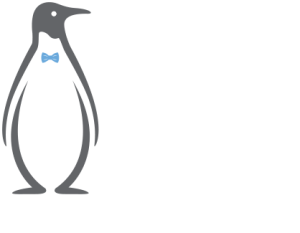The Importance of Dual Line Belts, Beams and Panels for ADA Compliant Queues
As a business or organization that welcomes and accommodates the public, it will be on your list of responsibilities to make your environment ADA compliant. While most might not think twice about the line they wait on for coffee in the morning, or as they enter a large venue, like a stadium or airport, for individuals with disabilities, navigating through these spaces, especially the queues, can often be challenging.
To help you achieve ADA compliance and to set-up or adjust your current queue, we’ll discuss how to design a compliant queue, with a focus on creating accessibility to individuals who are visually impaired. Additionally, we will review the use of dual line belts (also called dual belt or twin belt), dual beams, and panels as good options for your ADA compliance efforts. For wheelchair accessibility guidelines, see our article: ADA Compliance for Queues: The Importance of Spacing, Layout and Design.
Understanding ADA Requirements for Queues
In order to create queues that are ADA compliant, let’s first review the requirements set forth by the Americans with Disabilities Act (ADA). The ADA mandates that businesses and organizations provide equal access and opportunities for individuals with disabilities. For queues, this means ensuring that there is enough space, proper accessibility and guidance for those with disabilities to navigate through the line.
The ADA requires no obstacles or protrusions in queues that could hinder someone with a visual impairment. We’ll go through some of the requirements, but a more in-depth list with details can be found here: ADA Standards for Accessible Design. By understanding these requirements, you can take the necessary steps to design queues that are inclusive and accessible to all individuals.
Dual Line Belts, Beams or Panels: What are they and how do they contribute to ADA compliance?
With ADA compliance for queues, incorporating dual line belts, dual beams, or panels can be an effective solution. These options provide an additional level of accessibility and organization.
Dual line belts and dual beams are equipment options you can use for queue setup. Belts are made from thick and durable polyester. Beams are made of aluminum and are rigid and not retractable like belts. But both dual options provide an additional form of guidance and will make your queue ADA compliant.
Dual-line belt stanchions can help guide those in line with a visual impairment who are using a guide cane or walking stick. Those in line using a cane for detecting objects and other obstacles in their path will be guided by the second belt that is closer to the ground.

Resource: ADA Standards for Accessible Design
A dual-line belt (like image below) provides an additional belt between stanchions. This additional belt design meets the guidelines specified in the ADA/UFAS 4.4.1 standard, which prohibits the bottom belt from being more than 27” above the floor to prevent hazards for visually impaired customers with canes.

A post & panel barrier system, with panels like in image below, will also meet the ADA guidelines in section 4.4.1. The panel is working like the second (or dual) belt and beam in the other options we discussed. The panel will be an indicator and guide to the individual using a cane.

By implementing stanchion barriers with dual line belts, dual beams, or panels, businesses can design compliant lines for individuals with disabilities, specifically those with visual impairments. Consequently, dual-line belts also promote consistent distancing between customers by eliminating the practice of “line ducking” as well as keeping children in line.
Another advantage of these crowd control barrier systems is the range of customization options they offer. You can select belts in various colors that match your brand’s aesthetics, customize them with your company’s logo or messaging, and also add custom signage to the stanchions to convey important information to customers. Panel systems can also be customized and provide an opportunity to generate advertising revenue or display your branding.

Keep in mind that these line control barriers alone cannot guarantee an ADA-compliant queue. Meeting all ADA requirements, such as having clear paths of travel and accessible entrances, is crucial for achieving compliance. Dual-line belts, or these other options, serve as an important tool in this process.
These dual line systems contribute to ADA compliance by providing a streamlined and efficient way for individuals with disabilities to navigate through the queue. This not only enhances the overall experience but also promotes inclusivity and equal access.
Other Considerations for ADA Compliant Queues
People with visual impairments rely on other senses and tactile cues to navigate their surroundings. Incorporating tactile elements, such as braille signs, tactile ground surface indicators, along with dual-line belts can greatly assist individuals who are visually impaired in navigating the environment and queue.
By providing these tactile cues, businesses can ensure that individuals with visual impairments have a clear understanding of the layout and can move through it safely and independently.
Additionally, consider using high-contrast colors and clear signage to enhance visibility for individuals with low vision or color blindness. Take these considerations into account as you plan, design and create your space and set up your queues.

Maintaining your Queue for Continued ADA Compliance
Once you have designed an ADA compliant queue, it is crucial to maintain it to ensure continued accessibility for individuals with disabilities. Regular inspections and maintenance are essential to address any issues that may arise over time. This includes checking for any obstacles or protrusions that could hinder individuals with visual impairments.
Regularly updating signage and colors for visibility is also important. By staying proactive in maintaining your queue, you can ensure that it continues to meet ADA compliance standards and remains accessible for individuals with disabilities.
At Visiontron we believe it’s our job to enhance each and every person’s experience. From small retail stores to the world’s busiest airports, our products and solutions are there to help people get the most from their time with you. Need help selecting the right products for your queue? Get in touch with a People Guidance Pro today at 631-582-8600.





